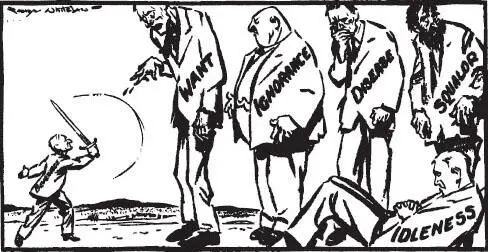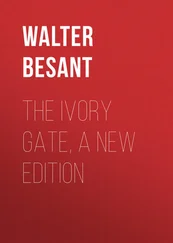Beveridge’s reaction was perhaps not surprising, for he was no ordinary civil servant. He was already well known as a radio broadcaster, academic, public servant and newspaper columnist; a man with more careers behind him than most ever enjoy. He was also by any standard, despite his detractors (of whom there were plenty), a member of the Great and the Good, at a time when such a class was perhaps more easily defined than at the start of the twenty-first century.

Born the son of a British judge in India in 1879 into a house staffed by twenty-six servants, he was schooled at Charterhouse. At Oxford he read mathematics and classics before, in 1903 at the age of twenty-four, he became in effect an Edwardian social worker and researcher at Toynbee Hall, the university foundation for the poor in the East End. It was there that ‘he learned the meaning of poverty and saw the consequences of unemployment’. 2The impoverishment of this part of London was to affect others in the tale of Britain’s welfare state, including Clement Attlee and Sir Keith Joseph, even if the conclusions each was to draw from the experience were to be rather different.
At Balliol, Beveridge recalled, the Master, Edward Caird, used to urge his charges ‘to go and discover why, with so much wealth in Britain, there continues to be so much poverty and how poverty can be cured’. 3
Oxford and Toynbee Hall triggered in Beveridge a lifelong interest in unemployment and broader social questions, turning the young man into a social reformer, but one whose academic training convinced him that policy should be based on exhaustive research and detailed analysis. In his autobiography, Beveridge characterised his own progress at the time as being from ‘Oxford to Whitechapel, Whitechapel to Fleet Street, Fleet Street to Whitehall’. 4On the way, however, there had been a visit early in 1907 to Germany, where he had studied the systems of compulsory social insurance for pensions and sickness, though not yet for unemployment, which Bismarck had introduced in the 1890s. It was an important and fitting lesson, for Bismarck’s is the only name to rank above Beveridge’s as a welfare state designer, although of a rather different model.
Late in 1905 the twenty-six-year-old Beveridge, on a recommendation from Caird, was installed as a leader writer at the Tory Morning Post, a newspaper which eventually merged with the Daily Telegraph. There he was given licence to write on social policy and advocate labour exchanges and unemployment insurance, drawing on the forms of social insurance he saw in Germany. That work brought him to the attention of the thirty-three-year-old Winston Churchill, who four years earlier had crossed the floor of the Commons from the Conservative to the Liberal benches. In July 1908, Churchill brought Beveridge into the Board of Trade as a fulltime civil servant. Over the next three years, Beveridge played a crucial role in the creation of a national network of labour exchanges of which he became the first director; and then in the formation of the world’s first, if initially highly limited, statutory insurance scheme against unemployment. The measure was introduced in 1911 by David Lloyd George and by Churchill, who by 1906 had become so imbued with the cause of social reform that he declared Liberalism to be ‘the cause of the left-out millions’. 5
In government service, Beveridge had seen Lloyd George as Chancellor introduce the first state pensions, dubbed by their grateful recipients ‘the Lord George’ (because only a Lord could afford to be so generous), and had seen the spectacular row over the 1909 ‘People’s Budget’ which raised the money to pay for them. The pensions, Lloyd George declared, lifted ‘the shadow of the workhouse from the homes of the poor’. Churchill, more temperately, declared of the first relatively meagre means-tested payments: ‘We have not pretended to carry the toiler on to dry land. What we have done is to strap a lifebelt about him.’
The first unemployment insurance in 1911 covered only about 2.75 million men, or roughly one in six of the workforce, in industries at high risk of cyclical unemployment such as iron and steel and shipbuilding. It ran out after fifteen weeks. But with it came the first state-backed insurance scheme for health. Lloyd George’s famous ‘Ninepence for Fourpence’ was more comprehensive, covering all male workers earning less than £160 a year. For the worker’s compulsory fourpence (just under 2p) a week, the employer had to add threepence and the state twopence. The scheme was administered by ‘approved societies’ and provided the services of a ‘panel’ family doctor, but no right to hospital care or medicine; with that came sick pay of ten shillings (50p) a week, but no cover for wives and children other than a maternity grant. What marked out the health and unemployment measures of the 1911 National Insurance Act from anything that went before was that both were contributory, compulsory and state organised, with employers, employees and the taxpayer each contributing: the so-called tripartite system. What they were not was comprehensive.
The same Liberal Government had also introduced the first tentative legislation on free school meals (for large families only), school medical inspections, and the first overtly redistributive budget – the ‘People’s Budget’ – to pay for it all. The House of Lords, then still the power-base of the landed aristocracy, was faced by a new supertax and what were, in effect, wealth taxes. They threw out what Lloyd George had declared to be ‘a war budget’ – one ‘for raising money to wage implacable warfare on poverty and squalidness’. He added the hope, which he almost lived to see realised, that ‘before this generation has passed away we shall have advanced a great step towards that good time when poverty and wretchedness and human degradation which always follow in its camp will be as remote to the people of this country as the wolves which once infested its forests’. 6The result, after a long battle, was the 1911 Parliament Act which removed for ever the right of the Lords to delay financial legislation.
Beveridge was thus not only a close Whitehall observer but a key player in the formation of what has been dubbed the ‘ambulance state’ – the lifebelt precursor to the modern welfare state which thirty years on he was to do so much to help create.
With the arrival of the First World War, Beveridge moved in to the Ministry of Munitions, where he was involved in deeply controversial moves to mobilise manpower and where he worked directly with Lloyd George. In 1916 he went to the Ministry of Food, becoming one of the chief architects of rationing and price control. He finished his first Whitehall career in 1919 at the age of thirty-nine as the ministry’s Permanent Secretary.
Peace saw him leave the civil service to become director of the London School of Economics, transforming it into a great base for the social sciences. During a spell as Vice Chancellor of London University he commissioned its massive and Teutonic Senate House (the building Hitler earmarked to be his London headquarters). In 1937 he went back to Oxford as Master of University College. His academic appointments did not, however, to use the title of his autobiography, remove him entirely from power and influence. In 1934 he was appointed chairman of the Unemployment Insurance Statutory Committee, whose job it was to keep the insurance fund solvent, and in 1936 he was brought back to Whitehall to help devise the rationing that operated from 1940. In 1941, when Greenwood called him in, Beveridge had a knowledge of the origins and scope of social services in Britain that was probably unequalled.
Читать дальше
![Nicholas Timmins The Five Giants [New Edition]: A Biography of the Welfare State обложка книги](/books/701739/nicholas-timmins-the-five-giants-new-edition-a-cover.webp)












